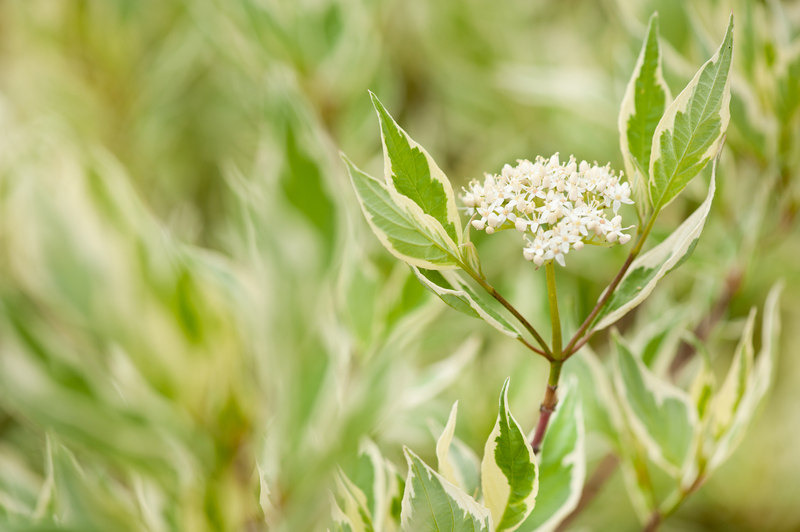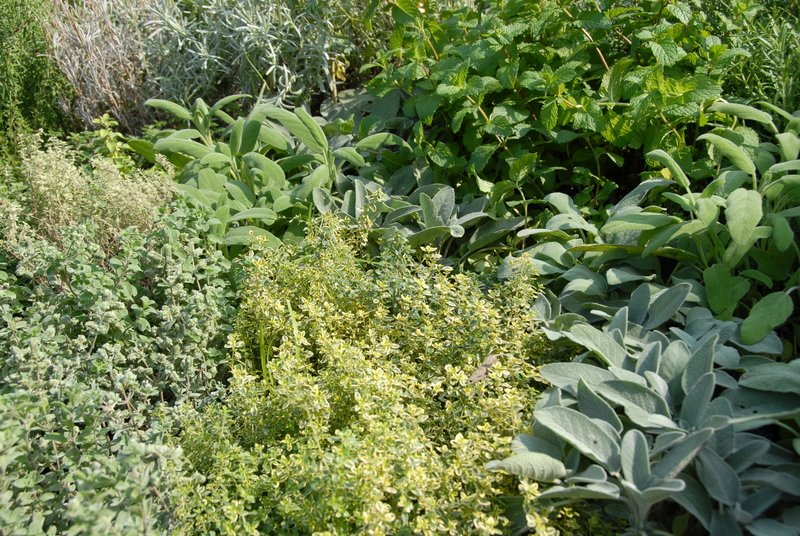Elevate your home with vertical gardening techniques
Posted on 25/08/2025
Elevate Your Home with Vertical Gardening Techniques
Looking to transform your living space, optimize your garden area, and bring vibrant greenery into your home? Vertical gardening techniques offer a creative and efficient way to elevate your home, regardless of space limitations. Whether you reside in a condo, apartment, or spacious house, integrating vertical gardens introduces beauty, health, and sustainability into your daily life. In this comprehensive guide, discover how vertical gardening can revolutionize your environment--with practical tips, plant suggestions, and solutions for every lifestyle.
What is Vertical Gardening?
Vertical gardening is a method that allows you to grow plants vertically rather than horizontally. By stacking, hanging, or mounting containers and plant systems, you can maximize limited garden space while creating stunning visual displays. This modern gardening approach doesn't just save space--it also fosters a healthier indoor atmosphere and improves aesthetic appeal.
Why Choose Vertical Gardening Techniques?
- Maximizes small spaces: Ideal for city dwellers or homes with limited outdoor areas.
- Enhances indoor air quality: Purifies and oxygenates indoor environments.
- Boosts aesthetics: Adds texture, color, and personality to walls and patios.
- Reduces clutter: Organizes plant collections efficiently.
- Improves mental well-being: Nature exposure lowers stress and promotes relaxation.

Popular Vertical Gardening Techniques to Elevate Your Home
There are a wide range of vertical gardening ideas that suit every preference and skill level. Explore the following tried-and-tested methods to create your own vertical masterpiece:
1. Living Wall Panels
Living walls, sometimes called green walls or plant walls, are vertical gardens installed directly onto an interior or exterior wall. These systems typically use modular panels or pockets filled with soil and contain built-in irrigation systems for effortless maintenance.
- Where to use: Hallways, living rooms, office spaces, patios, or exterior facades.
- Plant suggestions: Ferns, pothos, spider plants, succulents, herbs, and small flowering plants.
- Tips: Select shade- or sun-loving plants according to your light source.
2. Hanging Gardens
Hanging gardens are a versatile solution for both indoor and outdoor spaces. Suspend pots, baskets, or recycled containers from ceilings, walls, or balconies to create a lush, cascading effect.
- Where to use: Kitchen windows, bedrooms, porches, garden pergolas.
- Plant suggestions: Trailing vines like ivy, string of pearls, Boston fern, philodendron, or even cherry tomatoes.
- Tips: Mix various lengths and shapes for layered dimension and visual interest.
3. Trellises and Climbers
Use vertical structures like trellises, lattices, or wireframes to support climbing plants. This method is perfect for adding greenery to blank walls or fences without bulky installations.
- Where to use: Garden fences, outdoor walls, balconies, or windowsills.
- Plant suggestions: Jasmine, clematis, sweet peas, climbing roses, beans, or peas.
- Tips: Secure trellises well and guide plants gently as they grow upward.
4. Stackable Planters and Shelving Units
Stackable planters and freestanding vertical shelves are an excellent way to feature multiple plant layers and experiment with arrangement styles. They're practical, portable, and great for renters or those who want a flexible green display.
- Where to use: Entryways, balconies, patios, or as green room dividers.
- Plant suggestions: Herbs (basil, parsley), flowers, succulents, strawberries, or leafy greens.
- Tips: Use waterproof trays beneath planters to protect flooring or decking.
5. DIY Pallet Gardens
Transform old pallets into sustainable vertical garden planters. Securely hang or lean wooden pallets against a wall, and fill the slats with soil and plants. This technique combines upcycling with functionality--perfect for eco-conscious gardeners!
- Where to use: Apartment balconies, backyards, garage walls, or patios.
- Plant suggestions: Lettuce, chard, petunias, pansies, and herbs.
- Tips: Check pallets for food-safe markings and sand surfaces to prevent splinters.
6. Pocket and Felt Planters
Reusable felt pockets, moss walls, shoe organizers, and fabric planters introduce modern and space-saving vertical garden techniques. Such pockets efficiently house lightweight plants and can be attached to indoor or outdoor walls.
- Where to use: Kitchen backsplashes, bathroom walls, balcony railings.
- Plant suggestions: Herbs, strawberries, lightweight succulents, and small houseplants.
- Tips: Avoid overwatering; ensure pockets have adequate drainage.
Choosing the Best Plants for Vertical Gardens
Selecting the right flora is essential to a successful vertical gardening project. Consider these factors:
- Light requirements: Match plants to available light (full sun, partial, or shade).
- Water needs: Group plants with similar water requirements together.
- Growth habits: Opt for trailing, vining, or compact species.
- Climate suitability: In outdoor settings, select plants compatible with local weather.
Top Plant Choices for Vertical Gardening
- Indoor: Pothos, philodendron, heartleaf fern, English ivy, snake plant, peace lily, African violet.
- Edibles: Mint, basil, thyme, oregano, lettuce, kale, cherry tomatoes, beans.
- Outdoor walls: Clematis, bougainvillea, succulents, ferns, nasturtium, strawberries.
Essential Tools and Materials for Success
Before you embark on your journey to elevate your home with vertical gardening techniques, gather these essentials:
- Sturdy vertical support: Trellises, shelves, wall-mountable planters, or mesh frames.
- Quality potting mix: Lightweight, well-draining soil suitable for your chosen plants.
- Watering system: Drip irrigation kits or self-watering planters minimize maintenance.
- Mounting hardware: Wall anchors, brackets, screws, or hooks for safe installation.
- Fertilizers: Slow-release or balanced liquid plant food ensures healthy growth.
- Gardening gloves and hand tools: For planting, pruning, and harvesting with ease.
Step-by-Step Guide: How to Start a Vertical Garden at Home
Ready to elevate your home decor and create a flourishing green sanctuary? Follow these steps to kickstart your vertical gardening journey:
Step 1: Assess Your Space
- Identify an area with sufficient light, such as a bare interior wall, fence, or balcony.
- Measure available dimensions to select the appropriate vertical gardening system.
Step 2: Select a Suitable System
- Choose from living wall panels, hanging planters, trellises, stackable pots, or DIY pallet gardens.
- Consider budget, maintenance level, and design preference.
Step 3: Prepare Tools and Plants
- Gather all necessary hardware, planters, soil, and plant starts.
- Check if your wall can support the chosen vertical system's weight.
Step 4: Set Up and Plant
- Install your support structure firmly on the desired surface.
- Fill planters with high-quality potting mix and place plants according to lighting and watering needs.
Step 5: Water and Maintain
- Set up a drip irrigation or self-watering system, if possible.
- Monitor plant moisture, prune regularly, and fertilize as needed.
- Rotate or replace plants to keep your display fresh and healthy.
Creative Vertical Gardening Ideas for Every Home
Think beyond traditional vertical gardens! Get inspired by these clever ideas to elevate your indoor and outdoor living:
- Kitchen Herb Walls: Grow fresh culinary herbs just steps away from your stove.
- Shower Plant Walls: Transform bathrooms into spa-like retreats with moisture-loving ferns and vines.
- Privacy Screens: Use vertical gardens as natural room dividers or privacy barriers on balconies.
- Artistic Plant Murals: Create stunning wall art by arranging colorful foliage and flowers in patterns or designs.
- Recycled Planters: Repurpose bottles, cans, or shoe organizers for a creative, eco-friendly touch.
Maintenance Tips for Lasting Success
A thriving vertical garden requires ongoing care, but the rewards are worth the effort. Here's how to maintain your gorgeous, space-saving oasis:
- Monitor moisture: Vertical gardens tend to dry out quicker. Check soil regularly and water as needed.
- Prune and deadhead: Regularly remove faded leaves or flowers to encourage new growth.
- Control pests and diseases: Use organic pest control and inspect plants for signs of trouble.
- Fertilize thoughtfully: Over-fertilizing leads to foliage burn; follow recommended guidelines.
- Rotate plants: Swap new plants in and out for seasonal variety and optimal health.
Environmental and Lifestyle Benefits
Implementing vertical gardening solutions can bring a host of benefits to you, your home, and the planet:
- Improved air quality: Indoor plants remove toxins and increase oxygen for better health.
- Increased property value: Stylish, eco-friendly gardens add aesthetic and financial appeal.
- Reduced energy costs: Outdoor green walls act as natural insulation and cooling systems.
- Enhanced mental health: Gardening relieves stress, improves mood, and boosts productivity.
- Food security: Homegrown herbs and vegetables offer fresh, sustainable nutrition.

Common Challenges and Solutions
As with any home improvement project, vertical gardening comes with challenges. Learn how to overcome the most common issues:
- Overwatering: Use containers with drainage holes and avoid heavy soils to prevent root rot.
- Weight concerns: Anchor vertical gardens securely and use lightweight materials.
- Pests: Inspect plants frequently; treat with natural pest repellents if needed.
- Sunlight shortages: Supplement with grow lights or select low-light tolerant species.
- Limited plant lifespan: Choose hardy, adaptable plants and replace them seasonally.
Conclusion: Transform Your Space with Vertical Gardening
Elevating your home with vertical gardening techniques isn't just a trend--it's a sustainable, beautiful, and practical lifestyle choice that reconnects you with nature. Whether you're seeking to maximize a tiny balcony, enrich your living room decor, or create a productive kitchen garden, vertical gardening offers endless possibilities. With the right plants, tools, and a dash of creativity, you can enjoy a breathtaking display of greenery, improved air quality, and a newfound sense of well-being. Start your vertical garden today and watch your home come alive with color, texture, and life!
Ready to elevate your living space? Explore innovative vertical gardening ideas, embrace sustainable design, and cultivate your very own green sanctuary--no matter where you live!



